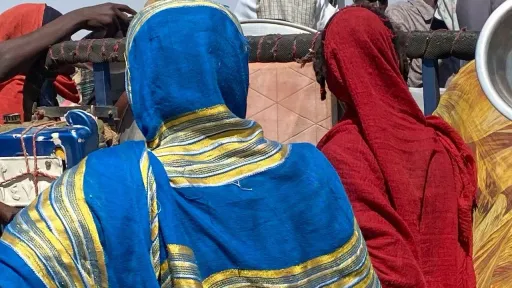Ethiopia has just opened Africa's largest dam. Kenya is reviving its own version of a dream dam. Tanzania has finished another. The Democratic Republic of Congo is planning the biggest hydro project of all.
Across East Africa, nations are harnessing their rivers for cheap, reliable electricity, which would translate into industrial growth, food security, and a way out of energy dependence.
Kenya announced recently that its ambitious High Grand Falls Dam project on the Tana river, which flows from the Aberdare mountains to the Indian Ocean, was back on track after being called off earlier this year without assigning any reason.
The project promises to generate 700 megawatts, enough to power five million homes and ensure uninterrupted supply for irrigation schemes with a target of over 5.6 billion cubic metres of water.
Kenya's principal secretary for energy, Alex Wachira, said on September 18 that a technical committee had been formed, with construction expected within five years. He labelled the project a "game-changer".
Industrial catalyst
So, what is driving this region-wide push for dams?
Mohammed Guleid, the former deputy governor of Isiolo County in Kenya, points to what he calls an acknowledgment of foundational requirements for development.
"Energy is one of the drivers of industrial development," Guleid tells TRT Afrika. "Most developed countries have gotten to where they are because they have access to affordable and reliable energy."
This vision is being realised in concrete and steel. Ethiopia's US $5 billion Grand Ethiopian Renaissance Dam (GERD) stands in a league of its own. Topping out at 476 feet and stretching nearly 1.8 kilometres, GERD is poised to generate 6,450 megawatts.
The project's impact is already rippling beyond its borders.
"With the Grand Ethiopian Renaissance Dam now completed, supply to neighbouring countries will increase," says Guleid. "Kenya, for example, is already importing close to 800 megawatts of electricity from Ethiopia. This is a major step forward for regional energy security."
Tanzania, boasts the newly completed Julius Nyerere Hydropower Project, a $2.9 billion venture expected to generate 2,115 megawatts.
DRC's proposed Grand Inga Dam is another mega project. With a potential output of 40,000 megawatts, it has the capacity to power much of the continent and claim the title of the world's largest hydropower station.
Uganda has the 600-megawatt Karuma Hydropower Station, commissioned in 2024 by President Yoweri Museveni.
Food-security bulwark
The benefits of this dam-building revolution in East Africa extend far beyond power lines. For nations increasingly confronted by climate change, water security is equally critical.
"Dams are instrumental in food security," explains Guleid. "They add to our capacity to produce sufficient food, whether for domestic use or exports."
Guleid also points to irrigation potential as a critical benefit in building Africa's resilience to drought.
The economic case is equally compelling. Affordable energy is a magnet for investment, and dams promise to dramatically lower energy costs.
"The cost of power will go down, besides becoming more reliable," says Guleid. "In Kenya, we pay close to 16 cents per kilowatt-hour, while in Ethiopia, they are paying a quarter of that. The dam projects in East Africa will make a lot of companies move to the region because the production cost for industry will be lower, attracting investment and creating jobs."

Economic independence
Ultimately, this is more than an infrastructure boom. In some ways, it's a reclamation of economic destiny, which Guleid frames as a pivotal shift towards self-reliance.
"We have been in a situation of dependence as a continent because we have not utilised the resources we have. These big dams promise to deliver us from the yoke of poverty," he tells TRT Afrika.
As a clutch of East African countries race to tap their rivers and scale up energy availability and access, the common finish line remains development and prosperity.
Guleid views this as a continent on the rise, encouraging other African countries to follow the examples of Ethiopia and Kenya.
"Clean energy will reduce emissions, bring in investments, and set Africa on a new, courageous path of self-reliance," he says.
























